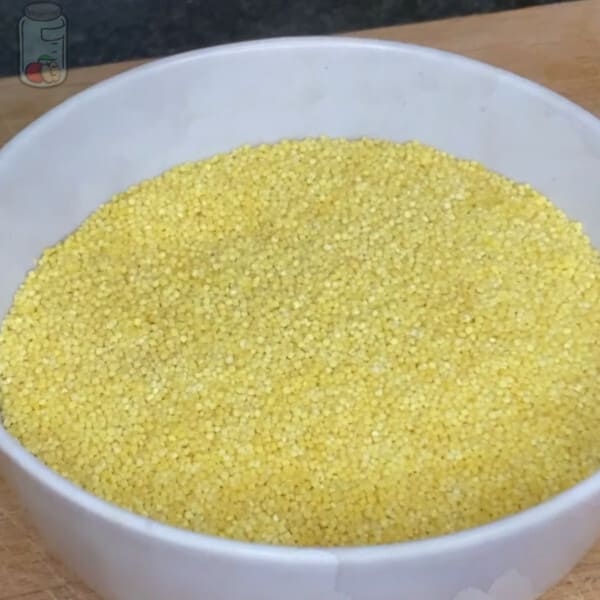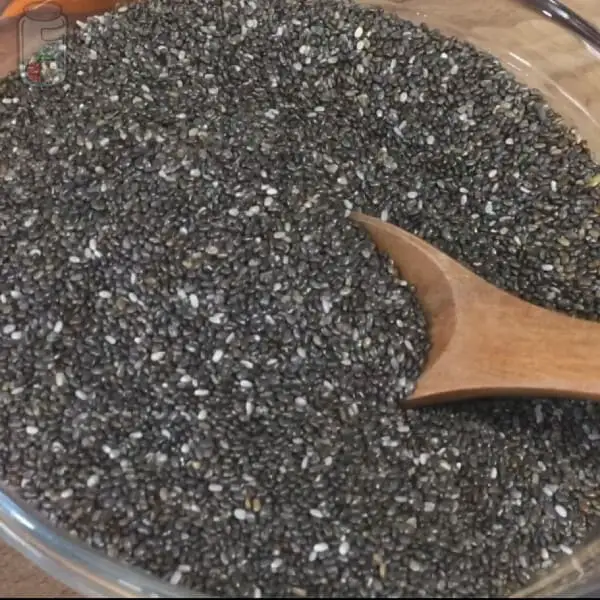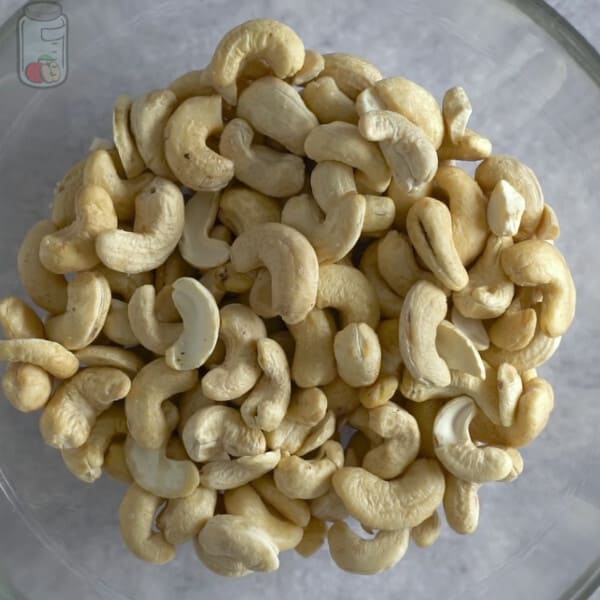Millet is a type of cereal that is gaining much popularity lately thanks to its benefits and being gluten-free, making it an option to consider for celiacs. Now, as you may know, if you are a reader of this website, you know my goal is to teach you how to store millet.
Millet can be stored at room temperature for two months, but if you freeze it, it can last four months. At the same time, millet flour will last one month at room temperature and two months in the freezer.

If you want to know more about how to preserve millet properly, continue with the reading.
How to store millet at room temperature
Millet sold for human consumption usually comes in grain already chipped (this shell is not edible) and packaged in well-sealed bags.
These bags are very resistant, but to add an extra safe, you can place them inside an airtight container in a dark place that remains cool and dry. Therefore you can store the unopened millet packaging at room temperature until the expiration date.
But once you open it, you can either continue to place the bag inside the airtight container or pour its contents into a glass container with an airtight lid.
This way, the opened millet packaging can last two months at room temperature. [1]
Can millet seeds be kept in the fridge?
It is a complicated point to store millet in the fridge since, depending on the technology used by your refrigeration equipment, it may or may not have a somewhat humid environment.
And millet grain absorbs a lot of moisture in the environment, so some experts recommend not storing it in the fridge. However, if you apply all my tips, you can keep the millet in the refrigerator without any inconvenience.
You must first keep the millet inside a container with an airtight seal, and if the container is made of glass much better. If the millet packaging is not open, you can keep it refrigerated until the expiration date.
But if you want to pour millet into a glass container, be sure to fill it. Otherwise, look for one of the correct sizes for the amount of millet you have, as the partially full millet container absorbs more moisture than a full one.
This way, the container filled with well-covered millet can be in the refrigerator for up to 3 months.
How to freeze millet
Can millet be frozen? Yes, this method is preferable to storing it in the fridge.
Storing it is very simple. If the millet packaging is not uncovered, put it inside a bag to freeze. Write the storage date before placing the millet in the freezer and leaving it there for a whole year.
However, if the packaging is open, it would be best to pass it to an airtight bag to freeze, then, with a marker, write down the storage date on the bag, and store the millet in the freezer for up to 4 months.
How to preserve cooked millet
Millet is cooked just like rice or quinoa, and in case you have prepared more than the bill, do not worry. You can store it in two ways: inside the fridge or in the freezer.
- Step 1: Wait for the millet to cool.
Never store food when it is still hot. The steam it generates will create moisture, which will lead to the appearance of mold. In addition, the millet will continue to cook, and its texture will be much softer.
- Step 2: Move to an airtight bag or container.
Once cold, pass the leftover millet into an airtight bag or container. If you are going to freeze it, the bag or container must have the ability to withstand the freezer.
- Step 3: Place the millet storage date.
Write with a marker the date of preparation of the cooked millet on the bag or use a label.
- Step 4: Save the cooked millet.
You can place the cooked millet in the fridge, in the coldest part, for a week, and if you keep it inside the freezer, it will last about 2 or 3 months.
How to preserve millet flour
Millet flour is an excellent substitute for wheat flour, which you can get in food stores or prepare at home by grinding the millet grains.
Concerning the packaging of millet flour for commercial sale, these follow the same guidelines when storing them as millet grains or any other flour.
It is also not recommended to store it in the fridge because millet flour absorbs a lot of moisture and the smell of other foods, but if you keep it well sealed and away from other foods, you could do it.
Uncapped millet flour packaging may be at room temperature until its expiration date. Once opened, millet flour can be in an airtight container for up to 1 month at room temperature.
In the fridge, the millet flour sealed can be between 4 and 5 weeks. While frozen, it will last about two months.
But if you want to prepare your millet flour, you can make and store it as follows:
- Step 1: Blend the millet grains.
Use a food processor or blender that is well-cleaned and dry, but ensure they don’t contain any smell because the millet will eventually absorb it. You can liquefy in batches of 30 seconds.
- Step 2: Sift the millet.
After you have smoothed the millet well, pass it through a fine colander, so the fine flour falls into a dry bowl. Filter twice to make sure you catch the large pieces.
You can liquefy the remaining pieces in the filter again and then sift. Keep it up until you complete the amount of flour you want to have.
- Step 3: Move to a glass container.
Place the sifted millet flour in a glass container with an airtight lid. Although if you want to store it in the freezer, it is best to put the millet flour in an airtight bag.
- Step 4: Write the storage date of the millet flour.
Please write the date with a marker in the bag or on a label.
- Step 5: Store the millet flour.
You can place the millet flour in the pantry, where it does not stick to heat, nor is it humid. The homemade millet flour will remain for a week at room temperature.
But if you want to keep it longer, keep the homemade millet flour in the freezer for between 1 and 2 months.
I do not advise refrigerating homemade millet flour since even the commercially sold one does not recommend keeping it that way.
Despite that, it will not make much difference if you keep it in the fridge compared to room temperature, so it is better to jump to the freezer.
How do you know if millet got bad?
These are the characteristics that will tell you if millet, both in grains and flour, spoiled:
- Rancid smell.
- Mold (black, greenish, or white spots or lint)
- Change of taste, nothing pleasant.
- It is very watery and viscous.
Why is millet spoiled?
Millet spoils because it is a natural product without much processing, which means that as time goes by, it ages and decomposes.
But the main enemy of millet is moisture. If you are exposed too long to it, this will cause you to develop mold or some other bacteria or fungus. As such, light and heat affect the quality of millet.
How long does millet last?
| Product | Duration |
| Millet (unopened packaging) | Until the expiration date |
| Millet at room temperature (opened packaging) | 2 months |
| Millet refrigerated (opened packaging) | 3 months |
| Frozen millet (opened packaging) | 4 months |
| Cooked millet in the fridge | 1 week |
| Cooked millet in the freezer | 2 – 3 months |
| Millet flour (unopened packaging) | Until the expiration date |
| Millet flour at room temperature (opened) | 1 month |
| Millet flour in the fridge (opened) | 4 – 5 weeks |
| Millet flour in the freezer (opened) | 2 months |
| Homemade millet flour at room temperature | 1 week |
| Homemade millet flour in the freezer | 2 – 3 months |
What is the best way to preserve millet?
The best way to preserve millet in grains is to keep it in the freezer, there, it will not only be kept for much longer, but it will eliminate any insect that has been placed, preventing it from spreading.
Another good option would be to store millet at room temperature, especially if you prepare millet regularly. Refrigerating is not an option, but it can be done by following some rules.
Regarding the cooked millet, please keep it in an airtight container in the fridge or freezer. There is no better or worse.
Millet flour follows the same guidelines as millet in grains when preserving it, so the best way to store it would be in the freezer.
Check the following posts if you want to learn how to preserve some other food.






